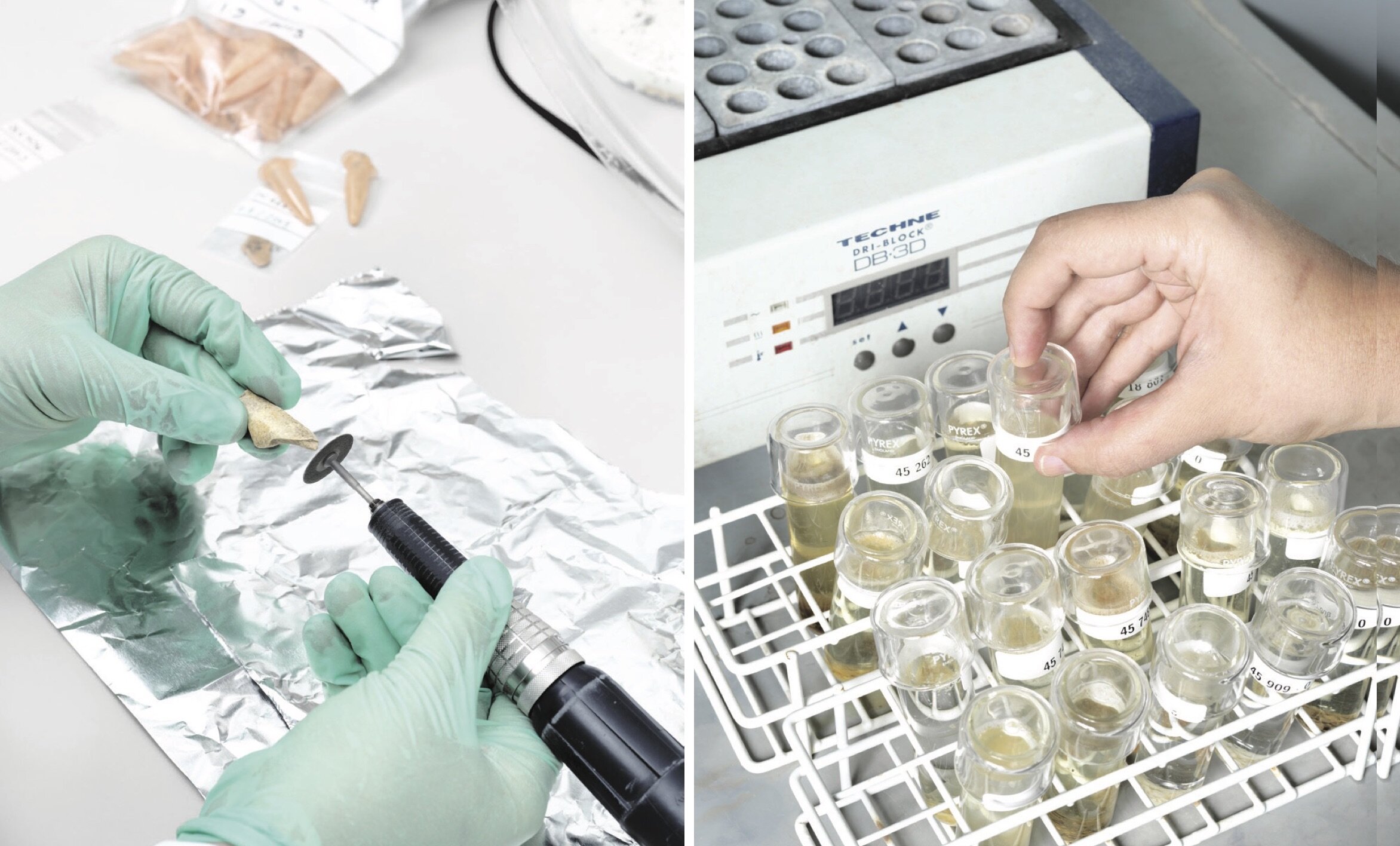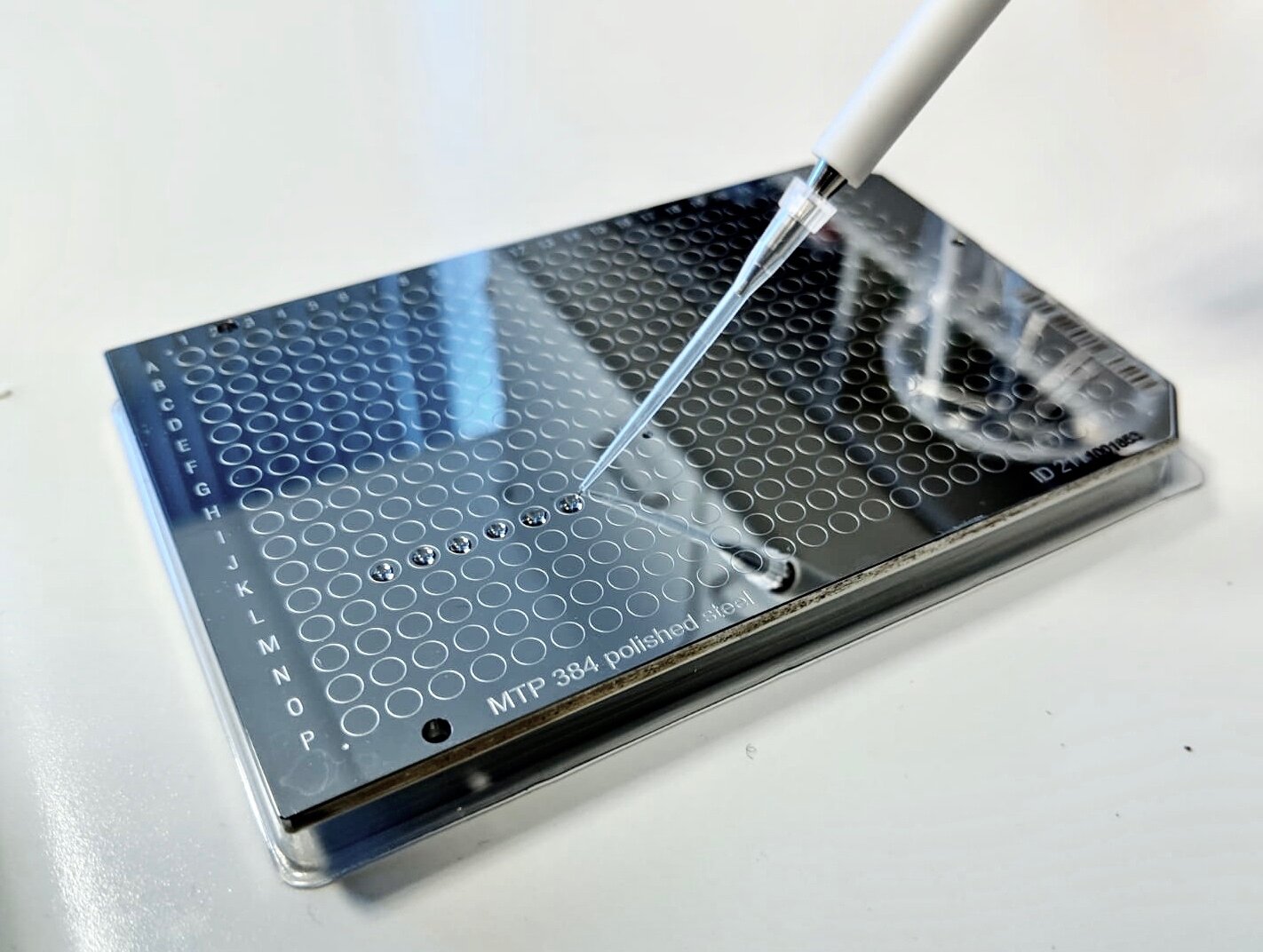Palaeoproteomics
The field dedicated to the study of ancient proteinaceous material is referred to as palaeoproteomics. Proteins are known to survive in the archaeological record often for much longer than other biomolecules, making their extraction and analysis an attractive alternative to ancient DNA. A suite of analytical tools and protocols have been developed in the last decade and the field is currently blooming with exciting new research.

Peptide Mass Fingerprinting (ZooMS)
Peptide Mass Fingerprinting (also known as ZooMS, standing for Zooarchaeology by Mass Spectrometry) is one of the two main techniques in the analysis of ancient proteins. The other one is shotgun proteomics. ZooMS is a fantastic tool for the taxonomic identification of collagenous material, in particularly bone, teeth, ivory and leather.
In 2017, I co-established and led a new ZooMS facility at the Department of Archaeology, Max Planck Institute for the Science of Human History (now Max Planck Institute for Geoanthropology) in Jena, Germany.
Since 2021, I established a new palaeoproteomics facility in Austria. The Douka Lab is housed in brand new space at the University Biology Building (UBB) of the Life Sciences Faculty, at the Department of Evolutionary Anthropology of the University of Vienna.
We have analysed over 25,000 bone samples from most corners of the planet, from the Pacific islands to northern Europe, and from East Africa to southern Siberia.
We are always looking for new and exciting projects!



FINDER Project
Idea
It all began in 2013. The idea came when my colleagues and I were working at Denisova Cave in southern Siberia. Intrigued by the sheer number of tiny, unidentifiable bones uncovered at the site, we wanted to know whether some humans were hidden amongst the volumes of broken animal bones.
Funding
In 2016 I was awarded a €2m-worth ERC Starting Grant for the implementation of FINDER project (2017-2024). This has allowed me to establish a research team consisting of 2 PhD students, 2 postdoctoral researchers, and several volunteers who work closely with a large number of international collaborators.
Implementation
FINDER has so far processed over 15,000 bone fragments from 30 sites across Eurasia. Among the thousands of animal bones, we have discovered 35 new human fossils, and have helped establishing two new ZooMS laboratories in China (Jilin University) and Russia (Novosibirsk). This will allow us and our colleagues to process samples locally, while transferring knowledge and training local scientists and students.


